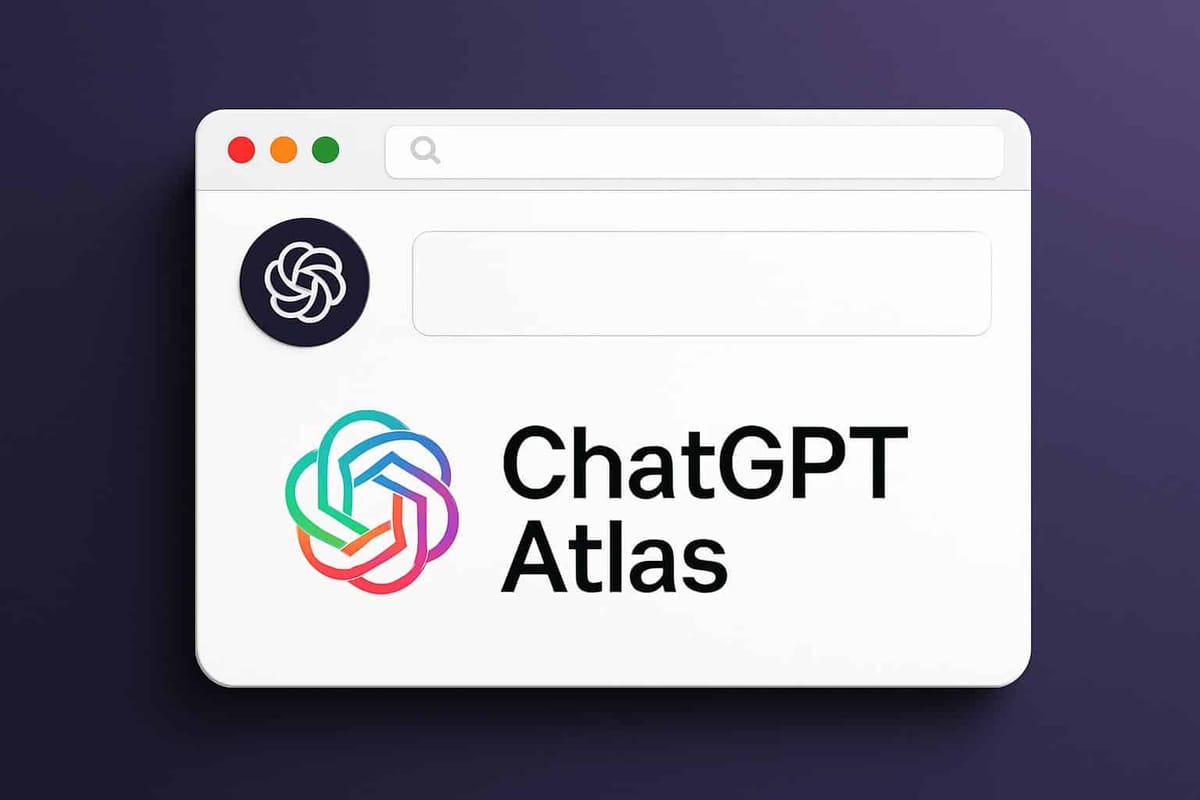The main focus of this collaboration is on AI-RAN (Artificial Intelligence Radio Access Network) technology, which represents a revolutionary method that integrates machine learning directly into network infrastructure. This development signifies the emergence of intelligent networks capable of independent thinking, adaptation, and real-time optimization. It goes beyond mere improvements and introduces a completely new way of functioning for mobile networks.
Although the shift towards 6G won't occur instantly, this partnership establishes a crucial foundation. By merging Nvidia's computational capabilities with Nokia's extensive understanding of telecommunications, both companies are positioning themselves to shape the upcoming era of wireless connectivity. The stakes are substantial : the entity that gains control over AI-driven network architecture will have a significant influence on global telecommunications for many years ahead.
The Strategic Partnership Between Nvidia and Nokia
The Nvidia investment in Nokia represents one of the most significant strategic partnership AI-RAN initiatives in telecommunications history. Nvidia committed $1 billion through the issuance of 166 million Nokia shares at $6 per share, securing approximately 2.9% ownership in the Finnish telecommunications giant. This financial commitment demonstrates Nvidia's confidence in the future of AI-powered mobile networks.
Objectives of the Partnership
The partnership centers on two primary objectives :
- Accelerating the development of AI-native mobile networks
- Pioneering a comprehensive AI-RAN platform that will reshape how telecommunications infrastructure operates
Combining Expertise for Innovation
You're looking at a collaboration that brings together Nvidia's AI computing prowess with Nokia's century-long telecommunications expertise, particularly through Nokia Bell Labs, which has driven innovation for over 100 years.
Leadership Vision for an AI-First Industry
Jensen Huang, Nvidia's CEO and founder, envisions this partnership as the foundation for transforming telecommunications into an AI-first industry. His counterpart, John Saw, Nokia's Chief Strategy and Technology Officer, shares this vision of creating intelligent networks that can self-optimize and adapt in real-time.
The leadership alignment between these two executives ensures that both companies are committed to pushing the boundaries of what's possible in mobile network technology, setting the stage for a new era of telecommunications infrastructure.

Understanding AI-RAN and Its Role in 6G Networks
The AI-RAN platform represents a fundamental shift in how mobile networks operate. Traditional radio access networks handle data transmission between devices and core networks, but AI-RAN architecture integrates artificial intelligence directly into this infrastructure. You get a system where machine learning algorithms process data at base stations, enabling split-second decisions about network resource allocation.
This distributed computing approach transforms how networks respond to demand. Base stations equipped with AI capabilities analyze traffic patterns in real-time, automatically adjusting frequency distribution and service quality without human intervention. When you're streaming video in a crowded stadium, the network intelligently allocates bandwidth where it's needed most. The radio access network optimization happens continuously, adapting to changing conditions millisecond by millisecond.
The efficiency gains are substantial. AI native mobile networks consume less energy because they activate resources only when necessary. You see latency drop to levels that make new applications viable. Autonomous drones require instant communication for safe navigation; AI-RAN delivers that. Immersive augmented reality experiences demand consistent, high-speed connections without interruption; the technology handles it.
Machine learning algorithms in RAN create self-configuring networks that learn from usage patterns. You get infrastructure that becomes smarter over time, predicting peak usage periods and preparing resources accordingly. This flexibility opens doors for connected services that weren't possible with traditional network architectures.
Technological Innovations Driving the Partnership
At the heart of this partnership sits the NVIDIA Arc Aerial RAN Computer (ARC-Pro), a purpose-built 6G-ready telecommunications computing platform. You'll find this system specifically engineered to handle intensive AI workloads within telecom infrastructure, processing massive amounts of data at the network edge where milliseconds matter. The ARC-Pro represents a fundamental shift in how mobile networks process information moving from centralized data centers to distributed AI grid factories across millions of base stations.
Nokia has integrated ARC-Pro directly into its new AI-RAN product, expanding its global access portfolio with technology that positions the company at the forefront of next-generation network equipment. This integration allows Nokia to offer operators a complete solution that combines radio access technology with AI processing capabilities in a single, unified platform.
Dell Technologies plays a crucial supporting role by providing Dell PowerEdge servers that deliver the scalable edge computing infrastructure necessary for AI-RAN solutions. These servers create the distributed computing foundation that enables real-time AI processing across the network.
The CUDA platform from Nvidia serves as the software integration layer, allowing operators to leverage their existing 5G infrastructure while preparing for 6G. This approach means you can upgrade equipment through software updates rather than complete hardware replacements, reducing costs and accelerating deployment timelines.

Industry Collaborations and Testing Initiatives for AI-RAN Technology
T-Mobile US is leading the way in validating this next-generation technology through extensive field evaluations set to begin in 2026. The carrier will use Nokia's anyRAN platform combined with Nvidia's hardware solutions to perform real-world testing across its network infrastructure. This partnership is a significant step in connecting laboratory innovation with commercial implementation.
The field evaluations will concentrate on three crucial performance metrics :
- Latency reduction through AI-optimized signal processing
- Energy consumption patterns under varying network loads
- Service quality consistency across different geographic conditions
You need rigorous testing environments to validate theoretical improvements before committing billions to nationwide infrastructure upgrades. T-Mobile's extensive network footprint provides the ideal proving ground for assessing how AI-RAN performs under diverse conditions from dense urban centers to rural coverage areas.
The 2026 timeline allows sufficient development cycles for Nokia and Nvidia to refine their platforms based on early feedback. These field trials will generate invaluable data about how AI algorithms respond to actual traffic patterns, weather conditions, and interference scenarios that laboratory simulations cannot fully replicate. The insights gained will directly inform the technical specifications and deployment strategies for 6G networks.
Benefits, Challenges, and Considerations in Deploying AI-RAN for 6G Networks
The deployment of AI-RAN technology brings transformative advantages for telecommunications operators.
Benefits of AI-RAN
Network self-configuration stands at the forefront of these benefits, allowing infrastructure to automatically adjust to fluctuating traffic patterns without manual intervention. You'll see networks that intelligently redistribute resources during peak hours, optimize frequency allocation based on real-time demand, and implement dynamic adaptation mechanisms that respond to changing conditions within milliseconds.
The energy optimization capabilities are particularly striking AI algorithms can reduce power consumption by up to 30% through intelligent resource management, shutting down underutilized components and activating capacity only when needed.
Edge computing benefits unlock entirely new revenue streams for operators and enterprises alike. Immersive low-latency services become commercially viable, enabling applications that were previously impossible with traditional network architectures. Autonomous drones can receive real-time control signals with minimal delay, while augmented reality experiences deliver seamless interactions without the lag that plagued earlier implementations. Enterprises can process sensitive data at the network edge, keeping information within their control while leveraging the computational power of distributed AI infrastructure.
Challenges in Implementing AI-RAN
The path forward requires navigating significant technical and regulatory obstacles.
Technical Challenges
- Interoperability standards remain a critical concern the industry needs robust open architectures that allow equipment from multiple vendors to work seamlessly together.
- Cybersecurity edge computing introduces new attack surfaces that demand careful attention.
- Privacy considerations intensify when AI algorithms analyze user behavior patterns in real-time at the network edge.
Regulatory Challenges
- Data localization requirements vary dramatically across jurisdictions, forcing operators to design systems that comply with diverse sovereignty rules.
- The infrastructure modernization costs are substantial estimates suggest billions in investment will be necessary to upgrade existing networks to support AI-native architectures.
You can't build a truly flexible AI-RAN ecosystem if proprietary systems create vendor lock-in situations.

Geopolitical, Economic Impact & Future Outlook of the Nvidia-Nokia Collaboration
It'a more than a business transaction, it's a strategic positioning move in the global race for telecommunications supremacy. This US-Europe technology collaboration geopolitical impact extends beyond corporate boardrooms, signaling a unified Western approach to next-generation network infrastructure at a time when technological sovereignty has become a national security priority.
Geopolitical Implications
The partnership places both companies at the forefront of defining international standards for AI-native mobile networking. You're witnessing a deliberate effort to establish Western leadership in 6G architecture before competing nations set the agenda. Nokia's century-long legacy in telecommunications research through Bell Labs, combined with Nvidia's dominance in AI computing, creates a formidable force in shaping how the world will communicate in the next decade.
Economic Potential
The market potential AI-RAN economic forecast $200B by 2030 reflects explosive growth expectations driven by surging mobile AI traffic. Industry analysts project this valuation based on the fundamental shift from traditional network architectures to intelligent, self-optimizing systems. You'll see this market expansion fueled by enterprises demanding low-latency services and consumers expecting seamless AI-powered experiences across their connected devices.
Technological Evolution
The transition to 6G architecture evolution mobile network redesign doesn't require operators to scrap existing infrastructure. The partnership enables a gradual migration path where current 5G Advanced systems evolve through software updates rather than hardware replacement. This approach reduces capital expenditure barriers while accelerating adoption timelines.
Future Capabilities
Generative AI spatial detection real-time analysis unified infrastructure capabilities represent the next frontier in network intelligence. You're looking at systems that can simultaneously process multiple AI workloads, from autonomous vehicle coordination to immersive augmented reality, while maintaining network performance through predictive optimization.
These platforms will analyze traffic patterns, anticipate congestion, and redistribute resources before users experience degradation, fundamentally changing how telecommunications networks operate at their core.
Conclusion
This strategic vision positions both companies as leaders in future mobile networks innovation that will reshape how you connect, work, and interact with technology.
This partnership goes beyond traditional vendor relationships. Nvidia brings unmatched AI computing power while Nokia contributes decades of telecommunications expertise and Bell Labs innovation. Together, they're creating networks that can think, adapt, and optimize themselves in real-time.
The investment impact goes beyond financial metrics. This collaboration establishes a model for how AI-native infrastructure will develop, setting standards that competitors will follow. You'll see the results of this partnership as operators worldwide implement AI-RAN solutions that deliver unparalleled performance, efficiency, and capabilities.
The race to define 6G has clear leaders. Nvidia and Nokia aren't just participating, they're at the forefront of intelligent, autonomous networks that will drive the next era of human connectivity.
FAQs (Frequently Asked Questions)
What is the strategic partnership between Nvidia and Nokia about ?
The strategic partnership between Nvidia and Nokia involves a $1 billion investment by Nvidia in Nokia, focusing on accelerating AI-native mobile networks through the development of an AI-RAN platform. This collaboration aims to revolutionize telecommunications by integrating artificial intelligence into radio access networks, paving the way for 6G technology.
What is AI-RAN and how does it contribute to 6G networks ?
AI-RAN (Artificial Intelligence Radio Access Network) combines artificial intelligence with radio access networks to optimize network performance. It uses machine learning algorithms and distributed computing at base stations to enable real-time adjustments in frequency distribution and service quality, resulting in low latency, energy efficiency, flexible network management, and support for new connected services like autonomous drones and immersive augmented reality within 6G networks.
What technological innovations are driving the Nvidia-Nokia partnership for 6G ?
Key technological innovations include Nvidia's Arc Aerial RAN Computer (ARC-Pro), a 6G-ready computing platform tailored for AI workloads in telecom infrastructure, integration of ARC-Pro into Nokia’s AI-RAN product portfolio, deployment of Dell PowerEdge servers to support scalable edge computing, and utilization of Nvidia’s CUDA platform for seamless software integration facilitating the transition from 5G to future 6G architectures.
How are industry collaborations facilitating testing and deployment of AI-RAN technology ?
Industry collaborations such as with T-Mobile US play a crucial role by conducting real-world field evaluations starting in 2026 using Nokia’s anyRAN software combined with Nvidia hardware solutions. These tests validate improvements in latency, energy savings, and service quality which are essential before large-scale deployment of AI-RAN technology in next-generation mobile networks.
What are the benefits and challenges associated with deploying AI-RAN for 6G networks ?
Benefits include self-configuring networks that dynamically adapt to traffic demands while reducing energy consumption, enabling new business opportunities through edge computing like immersive AR experiences and autonomous drone control. Challenges involve ensuring interoperability via open standards for multi-vendor ecosystems, addressing cybersecurity risks and data privacy concerns due to distributed edge processing, navigating regulatory hurdles related to data sovereignty and localization, as well as managing infrastructure modernization costs.
What is the geopolitical and economic impact of the Nvidia-Nokia collaboration on future mobile networks ?
This US-Europe partnership holds strategic importance amid global competition in next-generation telecom technologies. It potentially influences international standards setting and leadership in AI-native mobile networking. Economically, the global AI-RAN market is forecasted to reach approximately $200 billion by 2030 driven by mobile AI traffic growth. The collaboration lays a foundation for evolving from advanced 5G systems toward fully integrated AI-powered 6G networks incorporating generative AI capabilities, spatial detection functions, and real-time analytics on unified infrastructure platforms.




